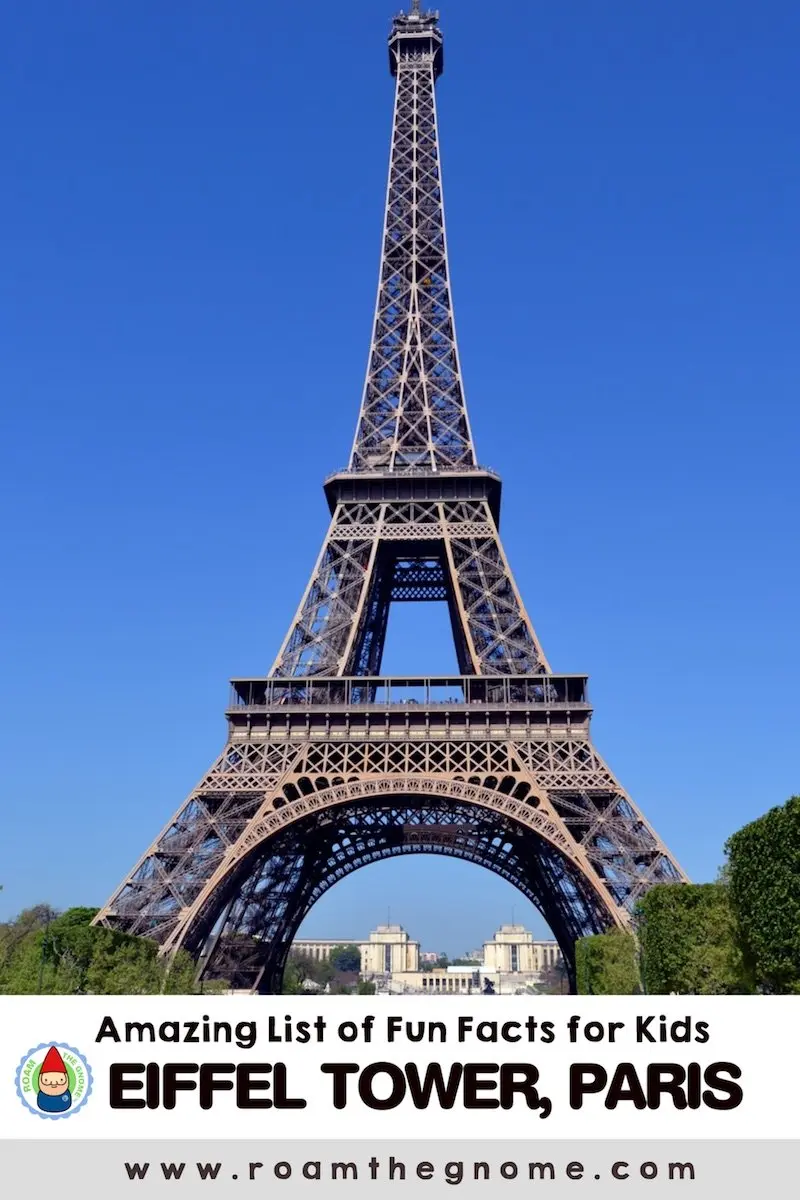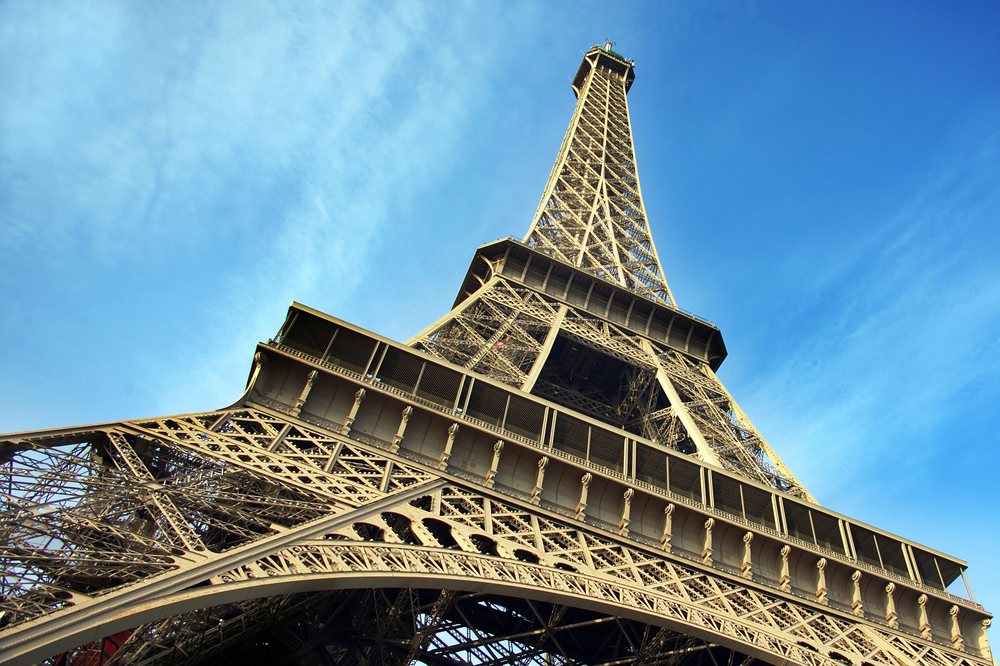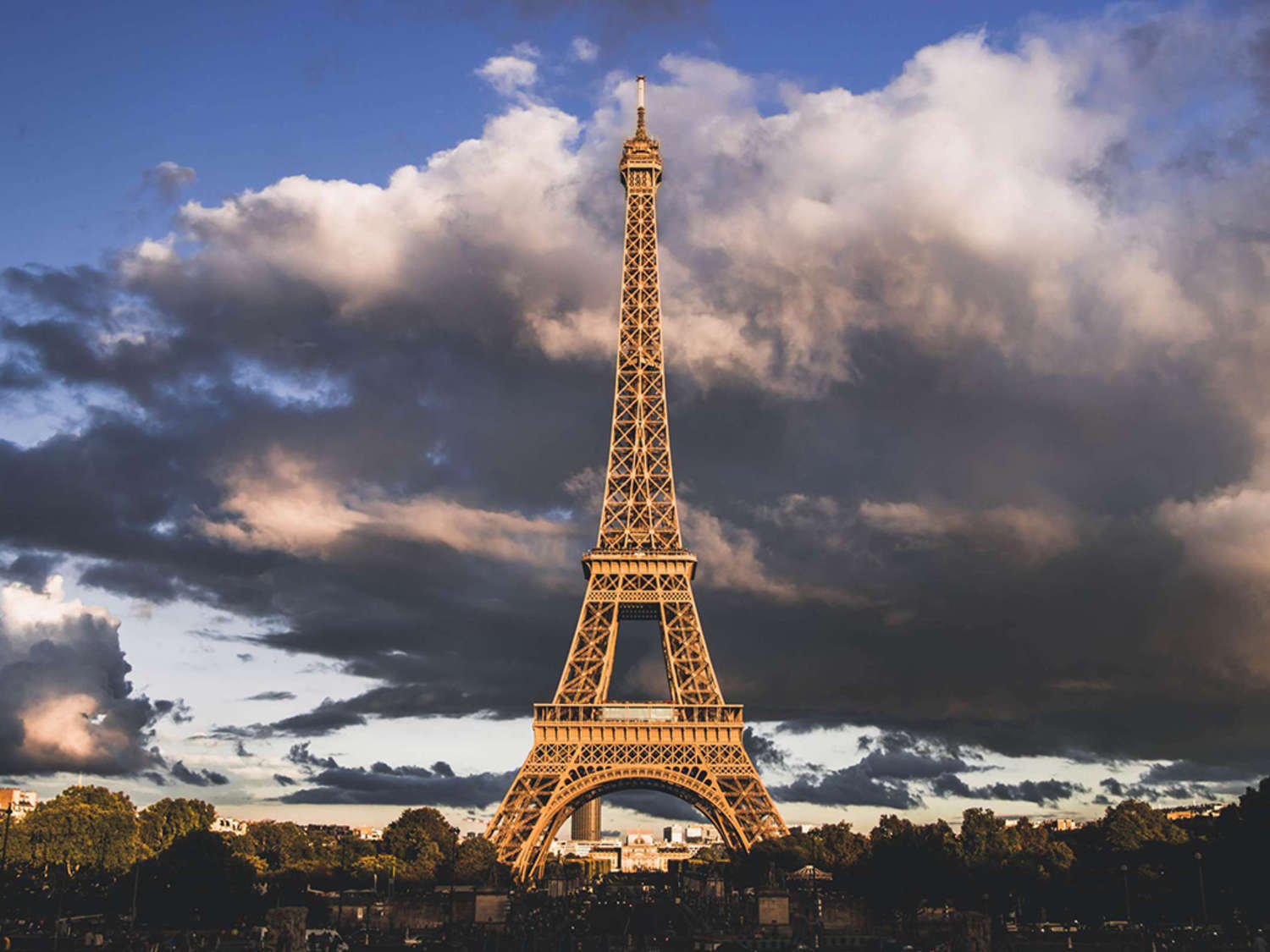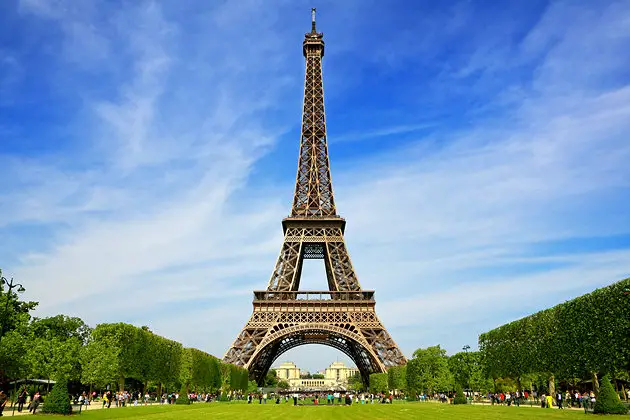The Eiffel Tower is one of the most recognizable landmarks in the world. It attracts millions of tourists every year who come to see its majestic frame and take in the views of Paris from its observation deck.
But did you know that there are some interesting facts about the Eiffel Tower that kids would love to learn about? From how it was built to how it almost didn’t exist, there’s a lot to discover about this famous tower.
Whether you’re planning a trip to Paris or just want to learn something new, these Eiffel Tower facts for kids are sure to impress!

Table of Contents
1. The Construction of the Eiffel Tower in 1889
The construction of the Eiffel Tower in 1889 was a monumental achievement for engineer Gustave Eiffel. The tower stands tall at 324 meters, making it the tallest building in the French capital, Paris. It took a record-breaking time of just over two years to complete this magnificent structure.
Materials used in building the Eiffel Tower included 7,000 tons of iron, which is said to have been stolen from Algeria. The tower’s purpose was initially to serve as an observation tower for the 1889 World Fair, held in Paris. The tower also had a scientific laboratory, which was used to conduct experiments in weather, aerodynamics, and telecommunications.
The Eiffel Tower’s construction was a monumental moment in history, and it instantly became a popular landmark and attraction. Today, it is one of the most famous landmarks in Europe and the world, attracting millions of tourists every year.
Even 132 years after its construction, the Eiffel Tower continues to fascinate people of all ages, especially kids. It’s hard not to be in awe of this iconic structure when visiting Paris. So, next time you’re in the city of lights, make sure to visit the Eiffel Tower and marvel at the incredible engineering feat that it is.

2. Gustave Eiffel, the Engineer behind the Tower
Gustave Eiffel, the brilliant engineer behind the iconic Eiffel Tower, is a name that will forever be associated with the magnificent creation. It was Eiffel’s vision and ingenuity that brought this majestic structure to life. With his team of designers, engineers, and entrepreneurs, he oversaw the construction of the tower, leaving an indelible mark on the world.
Throughout his career, Eiffel was renowned for his innovative use of metal in construction. He was driven by a passion for pushing the limits of engineering, and he did it with such style and grace that his name has become synonymous with excellence. The Eiffel Tower stands as a testament to Eiffel’s enduring legacy, a shining example of his incredible skill and vision.
Beyond the Eiffel Tower, Eiffel’s accomplishments were numerous. He built many other metallic works throughout Europe, including the Porto Viaduct in Portugal and the Viaduct du Garabit in France. Eiffel was a man of great creativity and technical brilliance, possessed of a rare combination of engineering and artistic talent.
Today, the Eiffel Tower continues to inspire and awe visitors from all over the world. It stands as a powerful symbol of the human spirit, a testament to what we can achieve when we dare to dream big. Gustave Eiffel’s legacy lives on through this magnificent structure and through the countless lives it has touched. We can only imagine what other incredible feats of engineering Eiffel might have accomplished, had he lived longer. But we can take comfort in the fact that his work continues to inspire us, even after all these years.

3. The Height and Size of the Tower
The Eiffel Tower is an iconic landmark that stands tall and proud in the heart of Paris. Standing at an impressive 324 meters, the tower is about the same height as an 81-story building, making it the tallest structure in Paris. Incredibly, the tower was built in 1889 and still remains standing to this day.
Gustave Eiffel, the engineer behind the tower, designed its base to be square. The tower’s original height was 985 feet but was later increased to 1,063 feet with the addition of a 70-foot antenna on top, making it about 81 stories high. This made the Eiffel Tower the tallest structure in the world for 41 years until it was surpassed by the completion of the Chrysler Building in 1930.
The construction of the Eiffel Tower was a record-breaking feat achieved in just two years, two months, and five days. This is a remarkable feat considering the technology available in the late 1800s. The tower was built with over 18,000 pieces of iron, and over 2.5 million rivets were used in its construction.
The Eiffel Tower was initially built for the World’s Fair, but its purpose has evolved over the years. Today, it serves as a symbol of Paris and an observation tower for tourists. Its observation decks offer stunning views of the city, and it also serves as a scientific laboratory for meteorology, telecommunication, and astronomy.
Recently, due to a strike movement, the Eiffel Tower was temporarily closed. However, it is back to welcoming visitors to Paris and continues to be a popular landmark and attraction. The Eiffel Tower replica in Las Vegas serves as a testament to its international fame and excellence in architecture.
Overall, the Eiffel Tower’s height and size are awe-inspiring, and its construction and continued standing are a wonder of engineering. It remains a symbol of Paris and a must-see attraction for tourists from all over the world.

4. Materials Used in Building the Eiffel Tower
The Eiffel Tower is an architectural masterpiece that stands out as one of the most recognizable landmarks in the world. The tower was built with cast iron and steel in 1889, which came from Romania. Gustave Eiffel, the mastermind behind the tower, used puddle iron supplied from the Pompey forges to construct the tower.
What’s fascinating about the Eiffel Tower is that it’s not made of modern-day steel, but puddled or welded iron. A total of 7,000 metric tons of puddling iron was used, which later became the foundation for construction steel. The tower’s primary material ensured that it was robust and provided the necessary strength to withstand the wind pressure and the weight of the observatory and visitors.
Moreover, metal has unique features that cause the Eiffel Tower to undergo thermal expansion and contraction. The tower expands by 6.75 inches during the summer and shrinks during the winter. Nevertheless, Gustave Eiffel’s expertise in the metal arch and metal truss forms under loading helped design a resilient and lightweight tower.
Today, the Eiffel Tower is a symbol of France’s cultural heritage, attracting millions of visitors worldwide. Its iconic structure, coupled with its impressive height of 1,063 feet, makes it an engineering marvel that is celebrated and appreciated by people of all ages.

5. Record-Breaking Time to Build the Tower
The construction of the Eiffel Tower in 1889 was a monumental feat in architectural history. Gustave Eiffel, the engineer behind the tower, oversaw its construction which took just over two years to complete. The tower, which stands at a height of 324 meters, was built using materials such as wrought iron and steel.
What’s even more impressive is the record-breaking time it took to build the tower – 2 years, 2 months, and 5 days! To put this into perspective, it took five months just to build the foundations for the tower. The Tower was completed in March 1889 and was considered a marvel of precision and speed.
The Eiffel Tower was built to serve as an entrance arch for the 1889 World’s Fair. Today, the tower serves as a symbol of Paris and remains one of the most recognizable and popular attractions in the world.
The tower also served as an observatory and scientific laboratory, leading to numerous discoveries in the fields of meteorology and physics.
Unfortunately, the current status of the tower is affected by the ongoing strike movement. However, this does not diminish its status as a popular landmark and attraction.
In Las Vegas, there is even a replica of the Eiffel Tower, demonstrating just how beloved and influential the original continues to be. Its record-breaking build time continues to awe and inspire generations.

6. Purpose of Building the Eiffel Tower
6. Purpose of Building the Eiffel Tower:
The Eiffel Tower wasn’t just built for its stunning beauty and architectural significance, but it had a deeper purpose. The tower was erected for the World’s Fair of 1889 to honor the 100th anniversary of the French Revolution. Gustave Eiffel, the engineer behind the tower, wanted to showcase France’s accomplishments in the field of engineering and design.
Beyond just celebrating the nation’s accomplishments, the Eiffel Tower was also intended to serve as a scientific laboratory and an observatory. The designers hoped the tower’s height would provide a unique space to conduct experiments and compile astronomical observations. In fact, the very top of the tower was used for various scientific experiments during the early 20th century.
The Eiffel Tower represented France’s technological advancements and quickly became a symbol of Paris as an international city. Over time, the iconic tower drew more and more tourists to Paris, eventually turning into the most visited paid monument in the world.
Today, it’s difficult to imagine Paris without the Eiffel Tower towering over the skyline. Its inspiring history and cultural significance continue to draw millions of visitors every year, showcasing why it’s one of the most beloved tourist attractions of all time.

7. Eiffel Tower as an Observatory and Scientific Laboratory
The Eiffel Tower, known for its breathtaking views and stunning architecture, holds a secret that not many know about. From 1889, the tower was used as a laboratory for measurements and scientific experiments by none other than Gustave Eiffel himself. The tower was equipped with considerable scientific apparatus and housed a meteorology lab on the third floor.
Eiffel was a passionate scientist and used the tower’s height to his advantage to study the stars and weather better. He set up two small laboratories on the third level, where he connected instruments by wire to the French weather bureau in Paris to measure wind speed and air pressure.
One of the most impressive activities Eiffel undertook at the tower was engraving the names of 72 of the country’s scientists on the tower’s first-level gallery. Additionally, he installed a laboratory atop the structure, further cementing the tower’s status as an observatory and scientific laboratory.
Today, tourists flock to the tower to take in the stunning views of the Parisian skyline. However, few know of the Eiffel Tower’s scientific past and the significant role it played in advancing scientific knowledge. The Eiffel Tower remains as a symbol of the combination of art, architecture, and science, making it an even more remarkable feat.

8. Current Status of the Tower Due to Strike Movement
The Eiffel Tower has always been a popular tourist attraction, drawing visitors from all over the world. However, recent strikes by the employees of the tower’s management company have disrupted the tower’s operations, creating concern and speculation among tourists and locals alike.
Despite the strike, the Eiffel Tower remains open to visitors, albeit with some restrictions. Access to the elevator has been limited, and visitors are encouraged to climb the stairs instead. However, this has not dampened the spirits of the tourists, who are still excited to see one of the most iconic landmarks in the world.
To fully appreciate the history and engineering behind the Eiffel Tower, it is important to understand its construction, the materials used, and the record-breaking time it took to build the tower. Additionally, the fact that Gustave Eiffel, a famous engineer, was behind the construction is testament to the tower’s significance.
Furthermore, the Eiffel Tower was not just built for aesthetic reasons. It served as an observatory and scientific laboratory, contributing to scientific research and discovery. Its current status, however, is due to the labor strike that has affected operations.
Despite this setback, a second Eiffel Tower in Las Vegas proves the tower’s popularity and enduring legacy. As one of the most visited tourist attractions in the world, the Eiffel Tower continues to captivate visitors with its charm and beauty, even in the midst of a strike.
9. Eiffel Tower in Las Vegas
Were you excited to see the replica of the iconic Eiffel Tower next to your hotel in Las Vegas? You’re not alone! Modeled after the famous tower in Paris, the Eiffel Tower in Las Vegas brings the magic of France to the Nevada desert.
While not as tall as its Parisian counterpart, the Las Vegas Eiffel Tower stands at an impressive 541 feet, making it an attraction in itself. Visitors can ride the glass elevators to the top of the tower to take in stunning views of the Las Vegas Strip, the Bellagio fountains, and the surrounding desert landscape.
But did you know that the Eiffel Tower in Las Vegas is not just a replica of the show? It also serves as a restaurant, with the famous Eiffel Tower Restaurant located on the 11th floor of the tower. Guests can enjoy exquisite French cuisine while looking out over the glittering lights of the city.
Not only that, but the Las Vegas Eiffel Tower is also a popular spot for weddings and proposals, adding a touch of romantic flair to the already romantic city.
While it may not have the same history and cultural significance as the original in Paris, the Eiffel Tower in Las Vegas captures the same essence and magic that draws millions of visitors to France every year.

10. Popular Landmark and Attraction
The Eiffel Tower holds true to its universal title as one of the most popular landmarks and attractions in the world. With its captivating beauty, structural grandeur, and rich history, it is not a wonder why millions of people from all over the globe flock to Paris just to see and experience the tower in person.
From its initial opening in 1889, the Eiffel Tower has attracted visitors from all walks of life. It is a symbol of French innovation, architecture, and engineering brilliance. Today, it still holds a significant place in the hearts of locals and tourists alike, making it a “must-visit” destination in Paris.
Whether it is a family vacation, a romantic getaway, or a solo adventure, the Eiffel Tower is on everyone’s itinerary. Visitors can climb the tower, take in the breathtaking view of the city, or dine at the tower’s famous restaurants. The tower’s surrounding park, Champ de Mars, offers a perfect picnic spot, and its extended garden is a peaceful getaway from the bustling city.
Moreover, the Eiffel Tower boasts a spectacular evening light show, where the tower is lit up with thousands of twinkling lights. Visitors can witness this beautiful display, making it a truly remarkable experience.
The Eiffel Tower has become such an iconic landmark that it has been recreated in many places worldwide. One of them is the replica in Las Vegas, which has become a popular attraction in its own right.
In summary, the Eiffel Tower is one of the world’s most significant landmarks and an attraction for tourists from every corner of the world. It is a reminder of France’s rich history and culture, and its majestic appearance never fails to impress visitors. The Eiffel Tower surely is a gem that Paris, France is proud of.